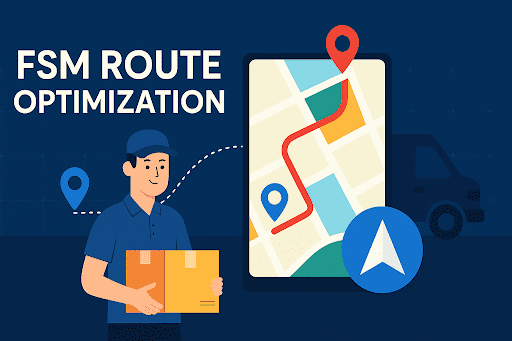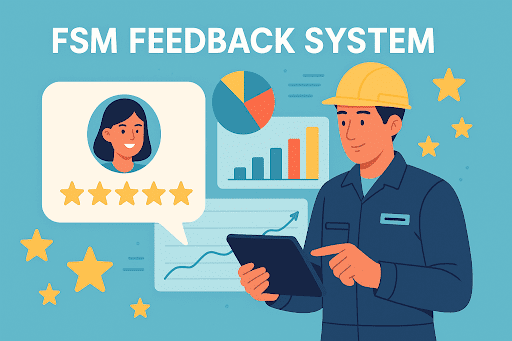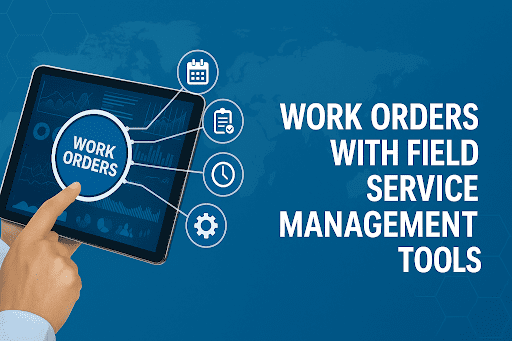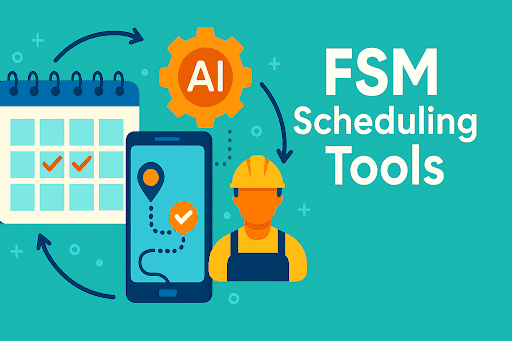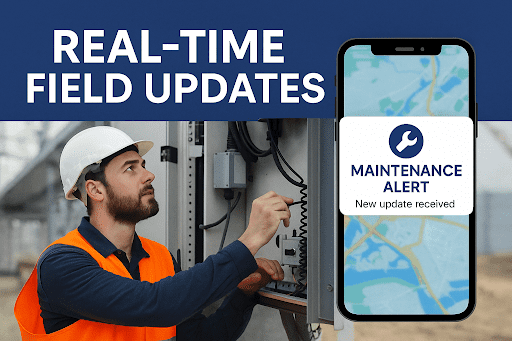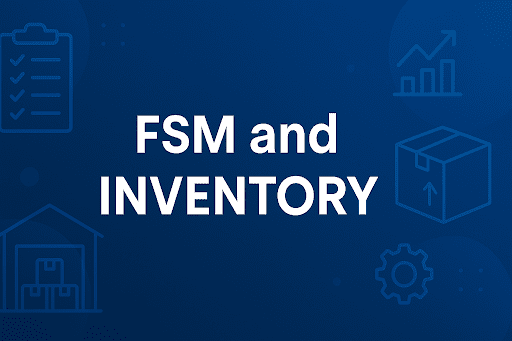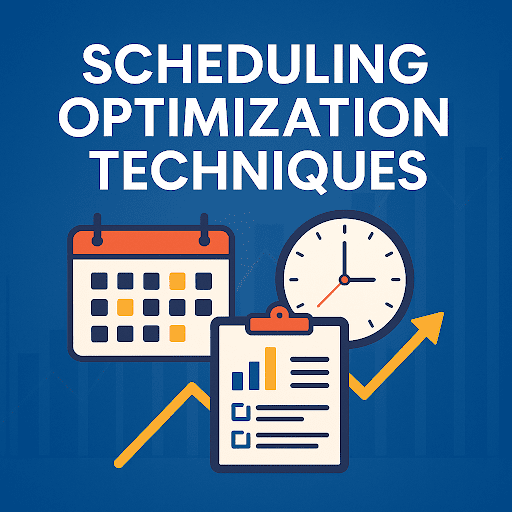 BACK TO Blog
BACK TO Blog
Asset Rental Management
Field Service
Businesses seek solutions to boost employee productivity and accountability and response times in today's modern mobile field service environment. GPS tracking serves as a revolutionary solution. GPS tracking systems for field technicians bring revolutionary changes to business remote workforce management while simultaneously delivering better customer satisfaction and reduced operational costs
- June 03, 2025
- DreamzCMMS Team
- 10 minutes read

- June 03, 2025
- DreamzCMMS Team
- 10 minutes read
Businesses seek solutions to boost employee productivity and accountability and response times in today's modern mobile field service environment. GPS tracking serves as a revolutionary solution. GPS tracking systems for field technicians bring revolutionary changes to business remote workforce management while simultaneously delivering better customer satisfaction and reduced operational costs and faster service delivery.
This article demonstrates how field service organizations can achieve unmatched levels of efficiency accuracy and transparency by implementing GPS and CMMS systems. The article demonstrates actual uses and optimal strategies while forecasting the future potential of location-based technologies.
Enhance Your GPS Capabilities with Smart Maintenance ToolsDiscover how combining GPS with robust asset management can maximize technician uptime and service reliability. Explore Asset Maintenance Management Software |
What Is GPS Tracking in Field Service Management?
The satellite-based GPS tracking system enables real-time location tracking of field technicians and their vehicles and assets. When integrated with field service management (FSM) platforms mobile GPS tracking tools provide managers with visibility into technician movements and route histories and job statuses and on-site time spent.
The core functionality enables:
- Real-time technician monitoring
- Route optimization for field service
- Time and attendance verification
- Geo-fencing alerts
- Geo-tagged work order updates
Businesses can obtain the information and insights required to optimize operations and guarantee that tasks are finished as efficiently as possible by utilizing GPS tracking for field technicians.
The Importance of GPS Tracking in Field Service Operations
Field service companies frequently deal with issues like ineffective scheduling, ambiguous technician locations, high fuel usage, and unconfirmed task completion. Customer dissatisfaction, lost revenue, and needless operational burdens can result from these difficulties.
These issues are directly addressed by field technicians using GPS tracking by:
- Improving field productivity with GPS
- Field technician location tracking in real-time
- Reducing travel time for technicians
- Ensuring compliance with work schedules
- Offering accountability through digital logs
Service managers can improve performance and transparency by making data-driven decisions with real-time technician monitoring.
1. Real-Time Location Monitoring for Workforce Visibility
Organizations can minimize response times and optimize task assignments by knowing the location of field technicians at any given time. Using real-time technician movement tracking, dispatchers can:
- Assign a service request to the closest available technician
- In the event of delays or traffic, a live technician will dispatch
- React immediately to crises or escalations
Service managers can precisely coordinate their teams thanks to this degree of visibility, particularly in large territories or during urgent repairs.
2. Route Optimization and Travel Efficiency
One of the main causes of field service costs is inefficient travel. GPS fleet tracking for field teams determines the quickest and most fuel-efficient routes by analyzing distance, traffic, and technician availability.
Effective route planning has the following advantages:
- Decreased fuel usage and wear and tear on vehicles
- increased daily completion rate of jobs
- Enhanced client satisfaction through punctual arrivals
Solutions like Field Sales Software offer built-in GPS and routing tools to automate this process and enhance technician travel efficiency.
3. Accurate Time Tracking and Attendance
Project timelines, billing, and payroll can all be impacted by time theft and false reporting. By automatically recording, GPS-based check-in and check-out features remove human error:
- Time of arrival and departure for technicians
- Travel time between destinations
- Time spent working on-site
This strengthens workforce accountability in addition to guaranteeing location-based scheduling accuracy.
4. Enhanced Customer Communication
Consumers anticipate prompt service and unambiguous communication. Service teams can provide precise estimated times of arrival (ETA) thanks to GPS tracking:
- Provide accurate estimated time of arrival (ETA)
- Notify customers of unexpected delays
- Offer live technician dispatching and location tracking
These features not only improve customer experience but also reduce call center workload by minimizing "Where is my technician?" inquiries.
5. Geo-Fencing for Better Compliance and Control
Managers can create virtual boundaries around job sites or specified service areas with geo-fencing. The system automatically sends out alerts or updates status when a technician enters or leaves a geo-fenced area.
Examples of geofencing use cases are:
- Making certain that technicians are at the appropriate work site
- Stopping illegal car use
- Keeping an eye on overtime or prolonged site visits
This degree of automation lessens the need for manual oversight while promoting compliance.
6. Historical Data and Performance Reporting
GPS systems record past movement data in addition to real-time tracking, which can be examined for patterns in performance. This comprises:
- Mileage logs and route history
- Average amount of time spent on a technician's job
- Monitoring technician mobility and idle time data
This information can be used by managers to enhance job estimates, recognize performance, and settle conflicts amicably.
7. Reducing Operational Costs
Field technicians can drastically cut expenses by using GPS tracking in a number of ways:
- Reduce fuel consumption by optimizing field service routes.
- With precise time logs, overtime was decreased.
- Reduced wear on vehicles due to intelligent route planning
- Avoiding unapproved travel
GPS fleet tracking is a high-return investment for service providers due to the compounding advantages it offers field teams.
8. Improved Safety and Emergency Response
For businesses that employ remote field workers, safety is of utmost importance. An essential safety layer is added by GPS tracking:
- Keeping an eye on technician movements in dangerous areas
- Notifying users of emergencies or extended periods of inactivity
- Facilitating prompt assistance when required
These features, which guarantee timely responses and peace of mind, are particularly helpful for remote workers or lone workers.
9. Integration with FSM and Mobile Apps
Field technician location tracking is made possible by the integration of contemporary GPS solutions with CMMS and mobile field apps.
- Job status updates while on the go
- GPS navigation through an app
- Time-stamped check-ins and geotagged work order updates
Workflows are made simpler, delays are reduced, and overall field productivity is increased with this unified interface.
Explore how an integrated solution like Field Service Management Software can bring GPS, scheduling, and technician dispatch into a single platform.
10. Use Case: Telecom Infrastructure Provider
Think about a telecom company that oversees fiber optic repairs throughout a state. Customer complaints regarding tardiness were common, and technicians frequently had lengthy breaks between assignments.
Following field teams' adoption of GPS fleet tracking, the daily job completion rate increased by 30%.
- A 40% decrease in complaints
- The amount of fuel used dropped by 15%.
- Managers dispatched technicians on a dynamic basis using location-based scheduling.
The outcome? streamlined processes, lower expenses, and more flexible field operations.
11. Best Practices for Using GPS Tracking Effectively
a) Employee Communication
Openly introduce GPS tracking. When workers are aware of the advantages—better job assignments, increased safety, and improving field productivity with GPS—they become more receptive.
b) System Integration
For optimal outcomes, combine data and automate processes by integrating GPS and CMMS with payroll, CRM, and FSM systems.
c) Goal-Setting
Whether your objective is to increase the number of jobs per day or decrease the amount of time technicians must travel, monitor your progress and base your decisions on location data.
d) Privacy Compliance
Make data collection policies explicit and only track during business hours. Trust is built on respect for privacy.
12. Future Outlook: Predictive and AI-Powered Field Operations
The upcoming generation of GPS tracking will integrate:
- AI-driven dispatch logic that takes into account the location, availability, and skill of the technician
- Predictive models to anticipate work delays and travel trends
- Integration with Internet of Things devices and smart tools
- Using real-time technician monitoring to provide highly customized customer notifications
Monitoring technician movement is essential for business intelligence and ongoing development, not just for oversight.
13. Strategic Advantages of Location Intelligence in Field Service
Using GPS tracking for field technicians unlocks strategic value through location intelligence, which goes beyond logistical improvements. This entails evaluating geographic data for forecasting regional performance, identifying service demand trends, and optimizing field resource allocation in addition to routing and dispatch.
Key strategic benefits include:
- Territory Planning: Managers can balance workloads and redistribute areas to cut down on delays and burnout by knowing technician coverage across regions.
- Service Demand Clustering: By identifying high-demand areas through technician movement tracking, businesses can create regional hubs or increase resource allocation.
Location-based scheduling and real-time technician monitoring combine to form a potent business intelligence tool that facilitates proactive decision-making as field operations get bigger and more complex.
14. Leveraging GPS Tracking for Emergency and Priority Response
Responding quickly to emergency service requests is one of the most important use cases for field technician location tracking. Response time can make the difference between minor disruption and serious repercussions in sectors like utilities, medical equipment, and security systems.
Using live technician dispatching capabilities, dispatchers can:
- Identify the closest available technician in seconds
- Use mobile GPS tracking tools to reroute them in real time.
- Instantly notify the customer and the technician.
- Depending on the location and skill set, escalate urgent issues.
Higher customer retention rates, better SLAs, and speedier resolutions are the results of this degree of responsiveness.
For more strategies on building emergency-ready field teams, explore our blog on Emergency Preparedness Planning.
15. Role of GPS Tracking in Sustainability and ESG Goals
Using GPS tracking for field technicians directly contributes to sustainability metrics as organizations work toward Environmental, Social, and Governance (ESG) goals.
- Diminished Carbon Emissions: Field service route optimization reduces emissions and fuel use.
- Vehicle Health Monitoring: Inbuilt GPS systems identify excessive idling or rough driving.
- Resource Efficiency: Fewer needless trips are made thanks to more intelligent scheduling and movement tracking for technicians.
Learn how intelligent field operations also drive profitability in our blog on Maximizing ROI on Rental Equipment.
16. Industry-Specific Applications of GPS Tracking
There is no one-size-fits-all approach to GPS tracking. The following are some ways that various industries profit from using GPS tracking for field technicians:
- Telecom & Cable: Geo-tagged work order updates enable quick dispatch and job verification.
- HVAC & Electrical: Effective route planning and location-based scheduling for multi-stop scheduling
- Healthcare Equipment Services: Using GPS logs to document technician visits in a way that is both compliant and audit-ready
- Construction & Facilities Maintenance: Monitoring the movement of technicians on expansive construction sites for safety and performance.
To further streamline communication and productivity in construction environments, check out our guide on Collaboration Tools for Construction Teams.
Conclusion
For field service organizations looking to maximize routes, enhance technician accountability, and provide quicker, more dependable service, field technicians must use GPS tracking. GPS tracking supports every aspect of contemporary field operations, from live technician dispatching and effective route planning to GPS and CMMS integration.
Investing in this technology gives businesses a competitive edge in a service-driven market in addition to increasing field productivity.
Start Your GPS-Powered Field Service Journey Today
Modern field service management demands real-time visibility, intelligent dispatching, and performance accountability. By leveraging GPS tracking for field technicians, your business can reduce costs, enhance customer satisfaction, and empower your workforce to perform at its peak.
Ready to transform your field operations?Explore industry-leading tools and resources designed to optimize efficiency, scheduling, and mobility.Visit us at: DreamzCMMS Schedule your personalized demo: Free Demo |
Ready for More?
Talk to one of our CMMS experts and see how DreamzCMMS can simplify your maintenance operations.
Book a free consultation
